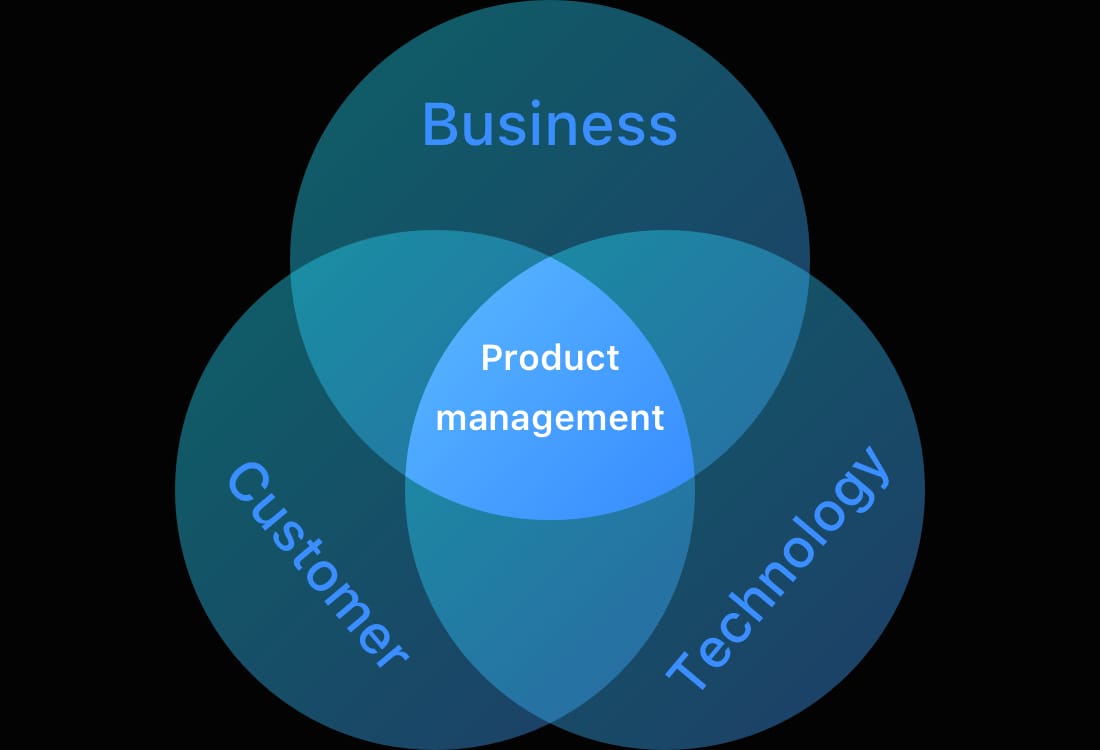Product Management in Digital Transformation

Digital transformation, at a high level, is the process of adapting a company’s culture, operating model, processes and working practices using digital technology. It is intended to improve the customer experience, reduce costs, breakdown silos and improve information flows, and increase innovation and efficiency.
The details of digital transformation can change between different industries at different times; however, it is intended to solve three main problems:
- A lack of digital culture among the workforce – limited awareness of the potential for technology to automate repetitive aspects of a job which often results in a lack of innovation and ossified, excessively complicated processes with plenty of manual intervention.
- A lack of advanced technology platforms and processes to enable innovation – exemplified by siloed data, the existence of separate technology stacks that are unable to communicate, and use of outdated technology which may cause process bottlenecks or contain cybersecurity vulnerabilities.
- A lack of the specific digital skills required to develop and use advanced digital technology – At the juncture of the two points above and typically indicated by lack of strong career progression or training opportunities for technology professionals, lack of interest in using technology to propel business growth, lack of technology investment and limited representation of technology teams in senior decision-making bodies.
Product management (PM) as a recognised digital profession, grew from changes in the digital technology lifecycle, sometimes called the software development life cycle (SDLC), occasioned by the development of technologies and approaches such as Agile, DevOps, SaaS, and cloud computing. These enabled compression of the SDLC and made continuous deployment a core part of software engineering, which in turn led to digital teams to think more of products than projects. The core of product management can be seen as focused on co-ordination, resource allocation, release management and planning for digital teams.

Areas of Focus
As a digital transformation programme works to solve the problems discussed above, product managers will enable and facilitate this process in three key ways.
- Customer focus: ensuring the transformation is centred above all on customer needs.
- Prioritisation: Ensuring prioritisation of resources toward high value/high impact tasks, and the focus on continuous delivery
- Agile delivery: Ensuring agility and the ability to pivot as circumstances change and new insights emerge.
The three roles are distinct, but mutually supporting and interconnected. Maintaining emphasis on customer is perhaps the overriding core focus of the product manager, since without it the transformation process will lack a guiding theme and cannot maintain coherence. The Product manager must have the diplomatic skills to win over key stakeholders in the transformation, while simultaneously pushing back when these stakeholders (who will often be subject matter experts in their field) are unable to demonstrate how the development of their proposed digital product will create value for the customer. It is worth noting that the customer could be internal (company staff), or external (the customer). Products developed for internal use do not directly improve the consumer experience but do add value by improving staff efficiency or effectiveness of internal users, enabling indirect benefits such as reduced costs or better customer service. Product managers must also use their co-ordinating role to proactively develop internal partnerships and model best practice. If the sales and marketing teams are siloed and maintain incompatible working practices, the benefits of integrating sales and marketing technology infrastructure will be limited.
Resource allocation and the appropriate prioritisation of resources, including personnel and financial resources, is a fundamental skill of product management, and critical in the development and execution of a digital transformation programme. Given a wide range of competing, and often evolving, priorities, product management must work to ensure that resources are not wasted on low-value work, and the various delivery teams are kept in alignment so as not to create bottlenecks and downtime.
Finally, the complexity of the digital transformation process ensures that, at some point, minds will be changed, or mistakes will be made that need rectifying. This process is eased by an Agile delivery process that emphasises incremental delivery and close customer relationships, ensuring that any misalignment that occurs between users and the delivery teams is rapidly identified and has only minor impact.

Product managers as product strategists
As we have discussed the day-to-day details of the role above, we should not neglect the strategic function of product management in the context of digital transformation, proactively driving priorities and assisting senior leaders in determining the best course of action. Product managers are usually the key team members with a cross-functional remit that gives them the best single perspective on (i) their team, and its resources and situation, (ii) their key stakeholders, (iii) how these integrate with the leadership’s vision and priorities. By working to integrate these, product management can play they key role in ensuring all the disparate elements are working together to execute the vision. Digital transformations are very complex, and without this key co-ordinating role, it is very likely that one or more elements will become mis-aligned – teams may be under-resourced and over-worked, stakeholders may be let down and become disillusioned, and the overarching management vision can become lost in the detail.
Additionally, product managers are well positioned to provide insight and leadership on key decisions. Product managers are often the key point of contact, they will often be central in making key decisions on fundamental aspects of the transformation, such as the degree of focus placed on customer-facing technology versus internal digital products. Management teams often lean heavily on product management to monitor progress and solicit feedback.
Aligning and co-ordinating with the strategic vision in mind
The day-to-day co-ordinating functions and the strategic aspects of product management are each essential to the delivery of the programme, and a good product management function will ensure that each is complimentary to the others, with on-the-ground insight being fed into the management decision-making process. By acting as a conduit of information from frontline teams to stakeholders and high-level management, effective product management can ensure that resources are used efficiently and in alignment with the vision, delivery teams are able to respond effectively to unforeseen problems, and the right product is delivered to the customer.
Author Bio:
Adarsh Kumar Arya is a highly skilled Product Manager & Solution Sales Expert and an experienced technical writer passionate about communicating complex information clearly and concisely. With a strong background in Digital Technologies and a keen eye for detail, Adarsh excels in translating technical concepts into user-friendly documentation.


No comments yet